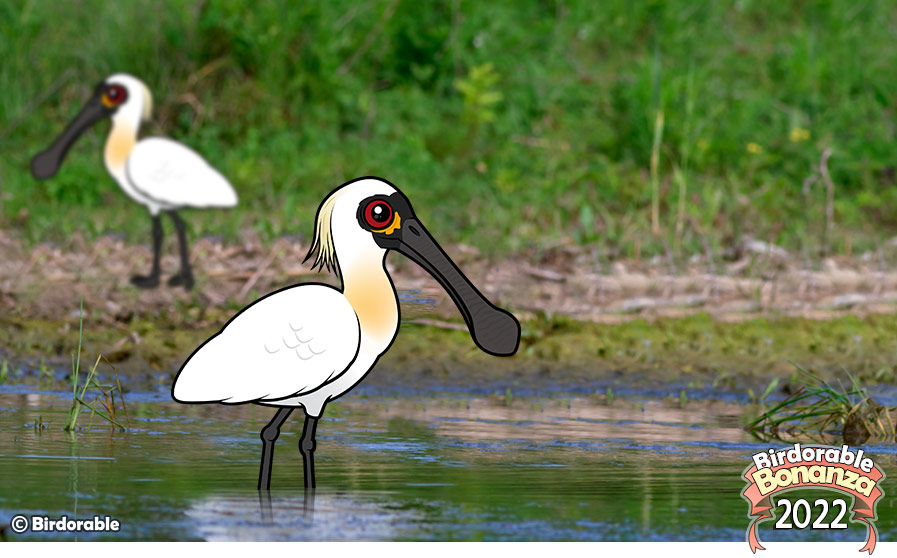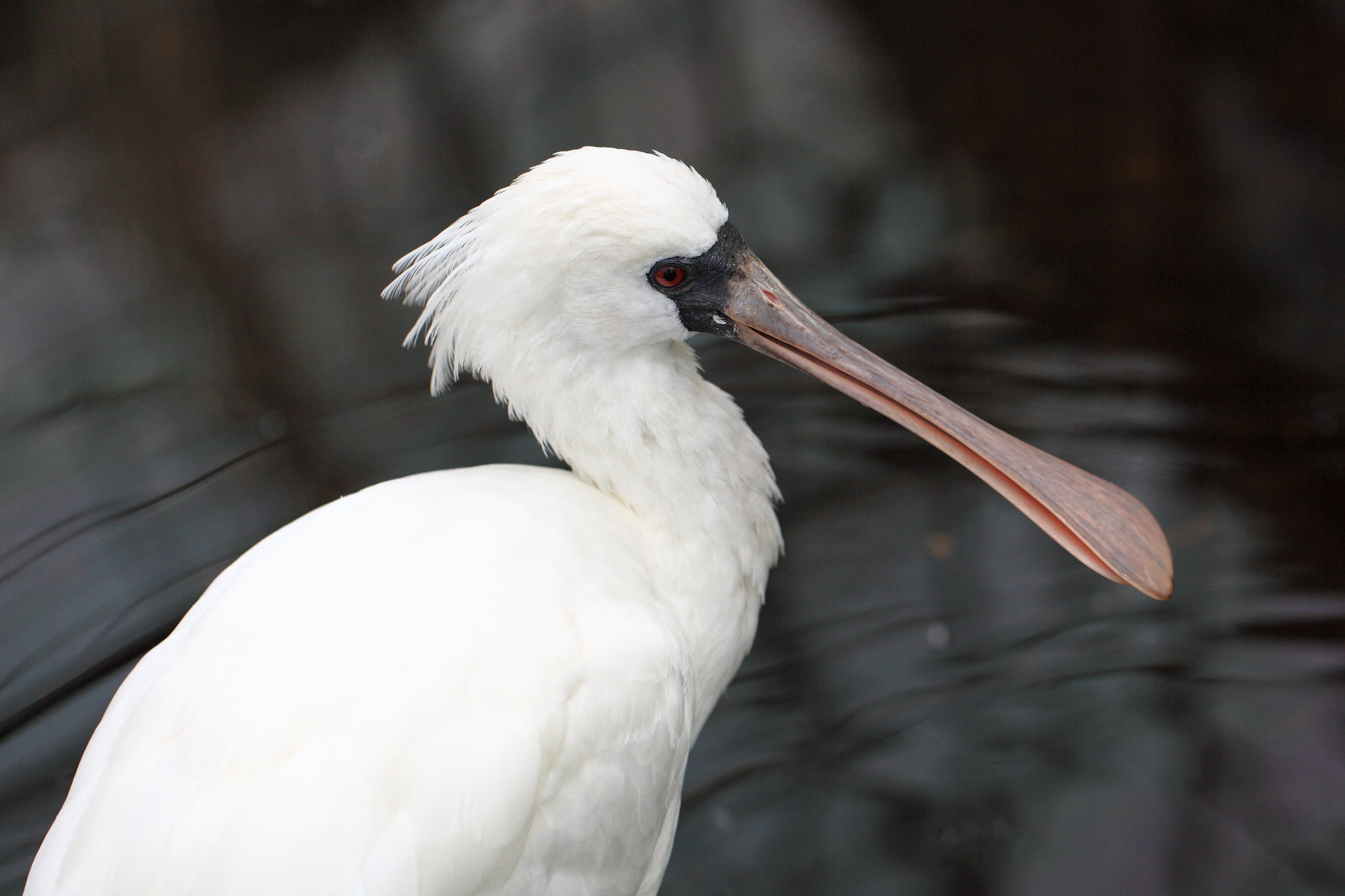2022 Bonanza Bird #8
Meet the Black-faced Spoonbill: A Unique and Endangered Bird

Today the Black-faced Spoonbill joins Birdorable!
This special bird is native to a small range across eastern Asia. Of all of the six species of spoonbill, the Black-faced Spoonbill has the most limited range, and is the only species to be considered Endangered (the others all have a conservation status of Least Concern). The biggest threat they face is loss of habitat.
Black-faced Spoonbills can be recognized by their long spatula-shaped bills, large white bodies, and namesake black faces. Breeding birds (like our cartoon cutie) develop a yellow band at the base of the neck. Young birds, and adults outside of breeding, lack the yellow band (like the photo example below).

Shop for gifts featuring the new bird on Amazon, including our Birdorable Black-faced Spoonbill Tank Top.
Tomorrow our Birdorable Bonanza will continue when we add a North American species named for the color of its eyes. This passerine has a repetitive song and is often heard before it is seen. Do you know the bird?






Comments
Leave a comment
Thank you!